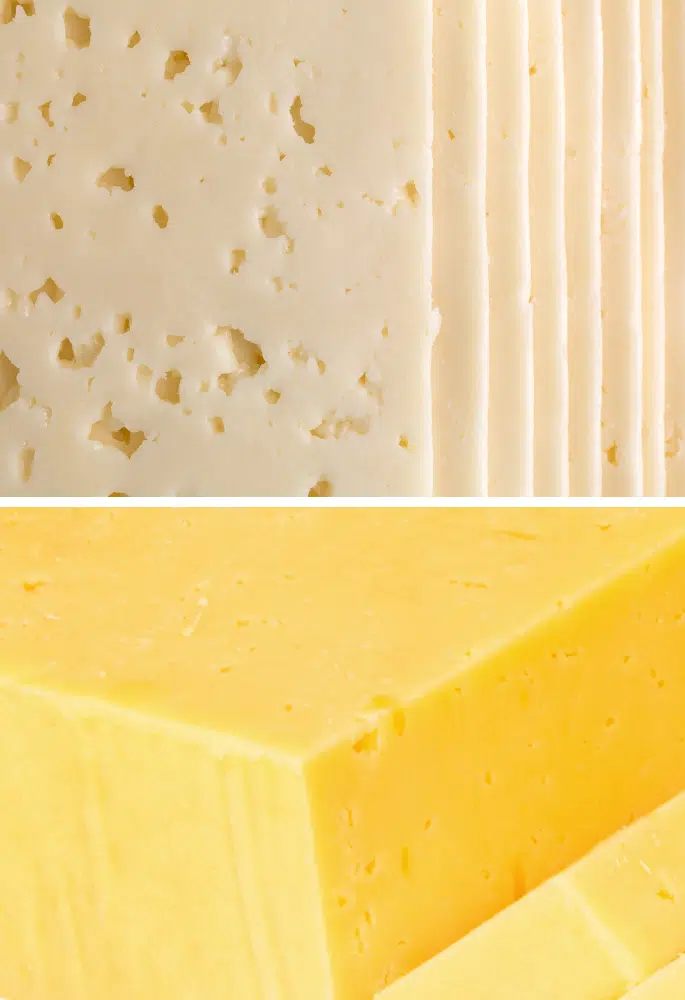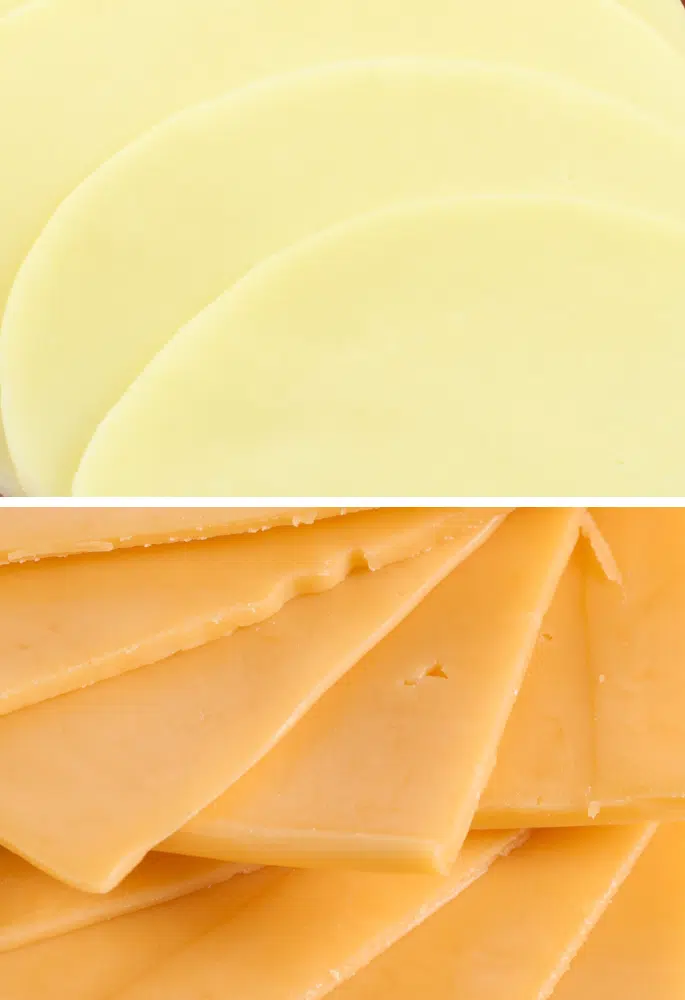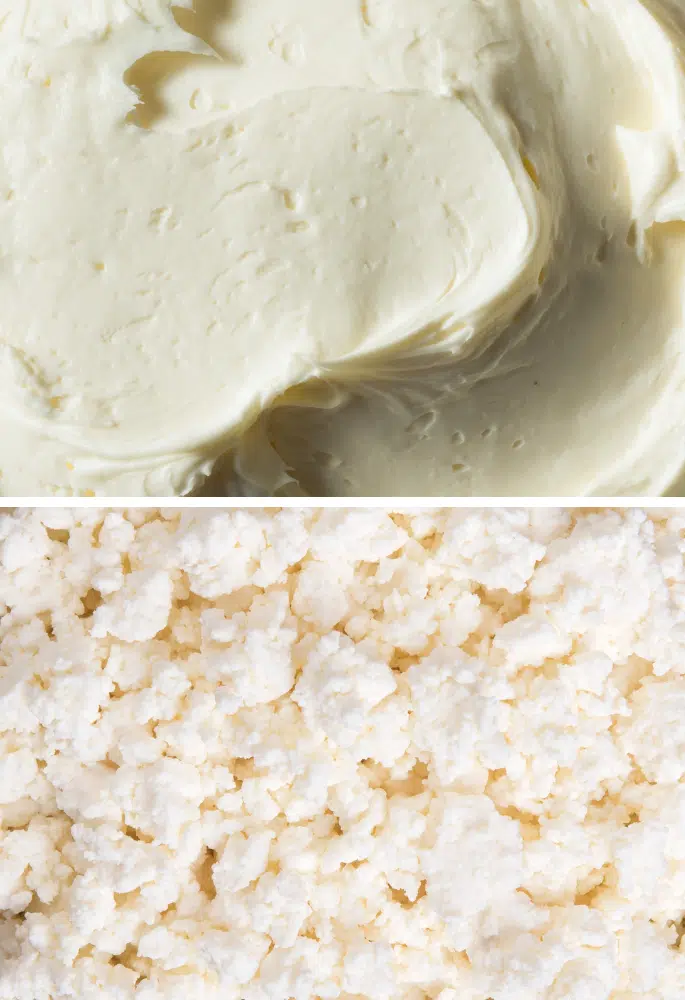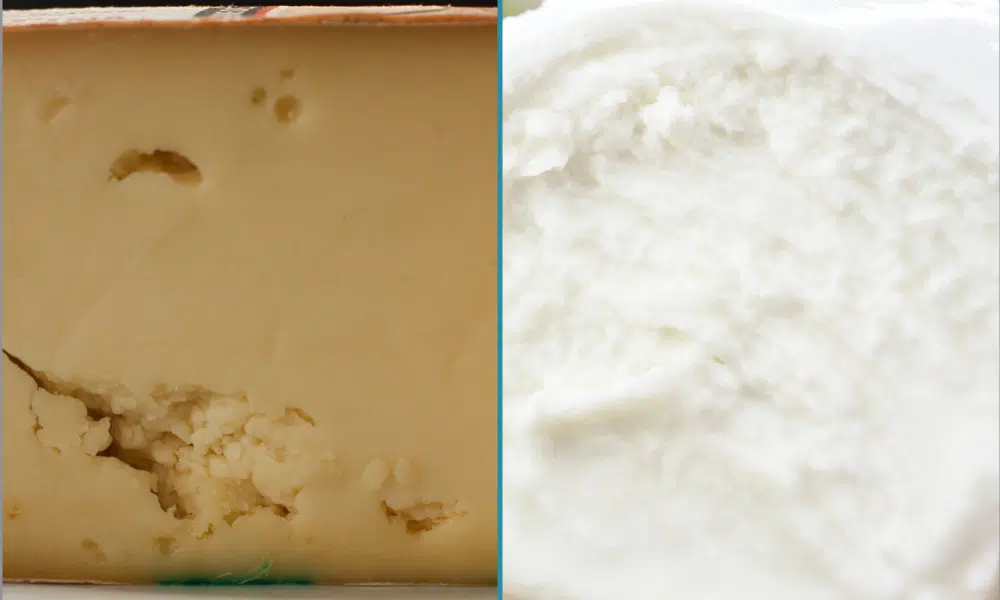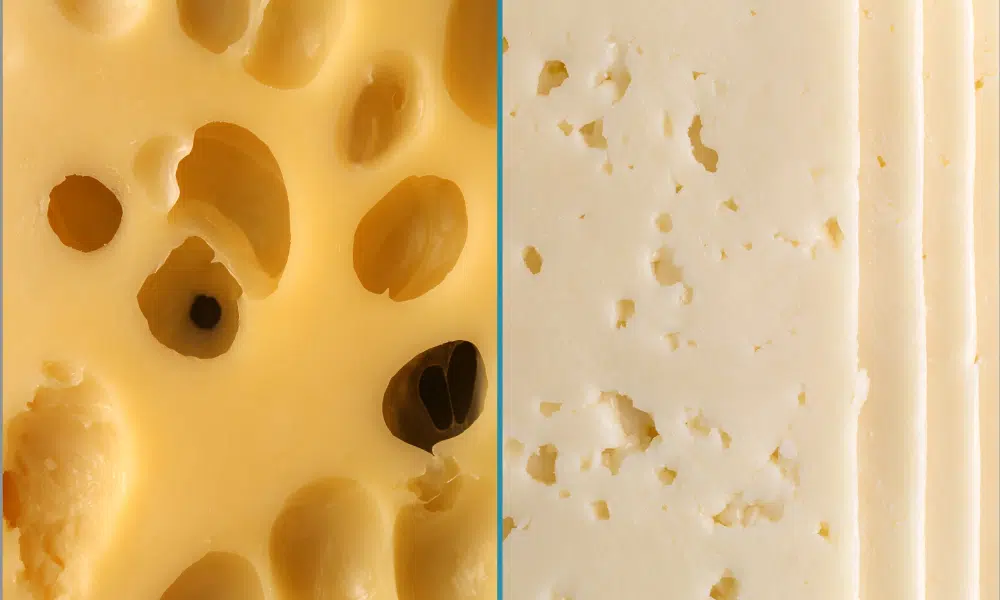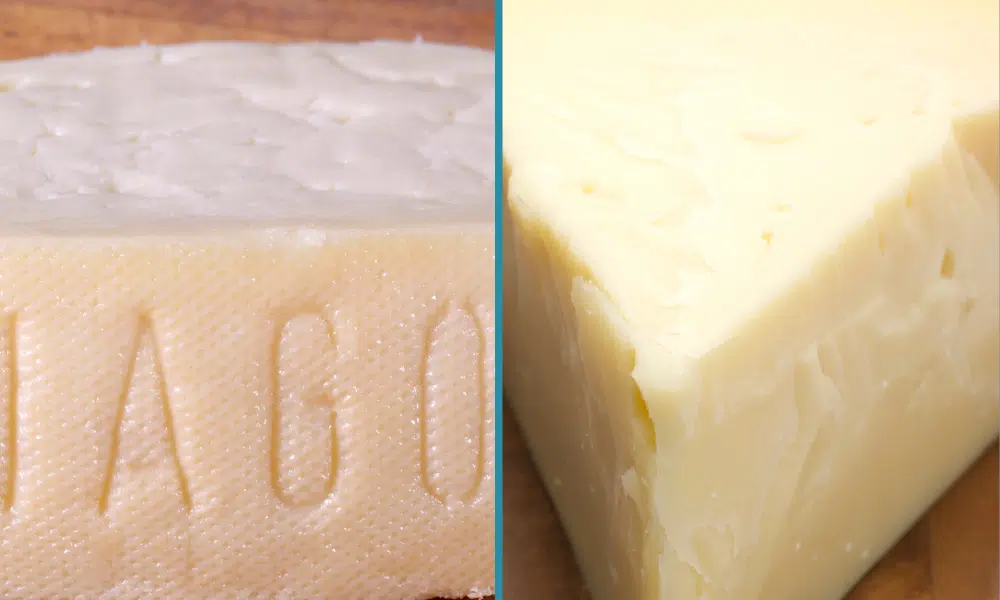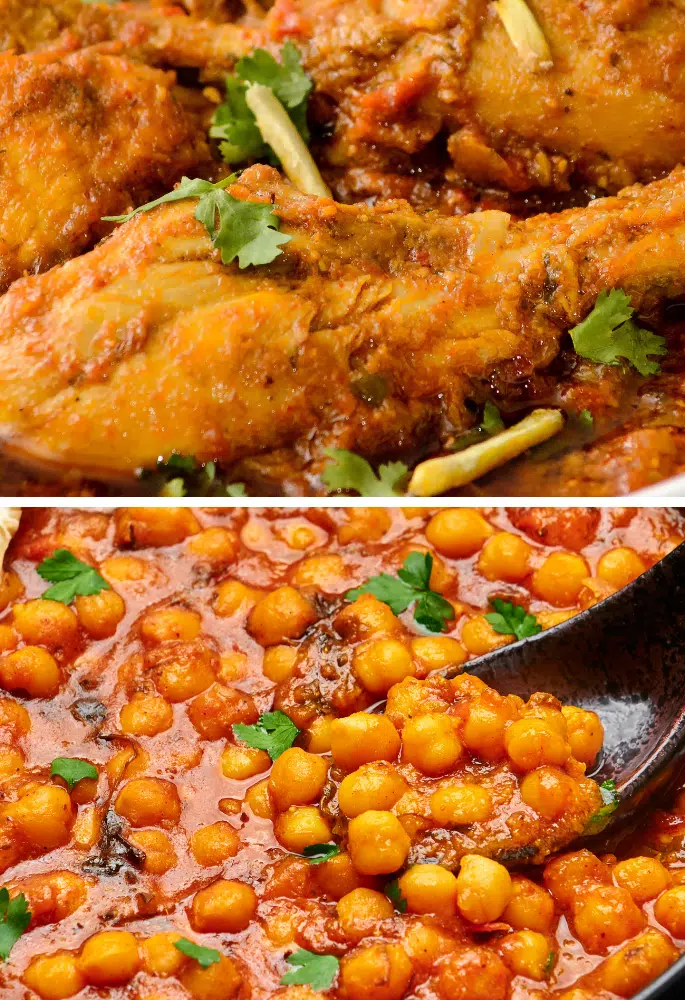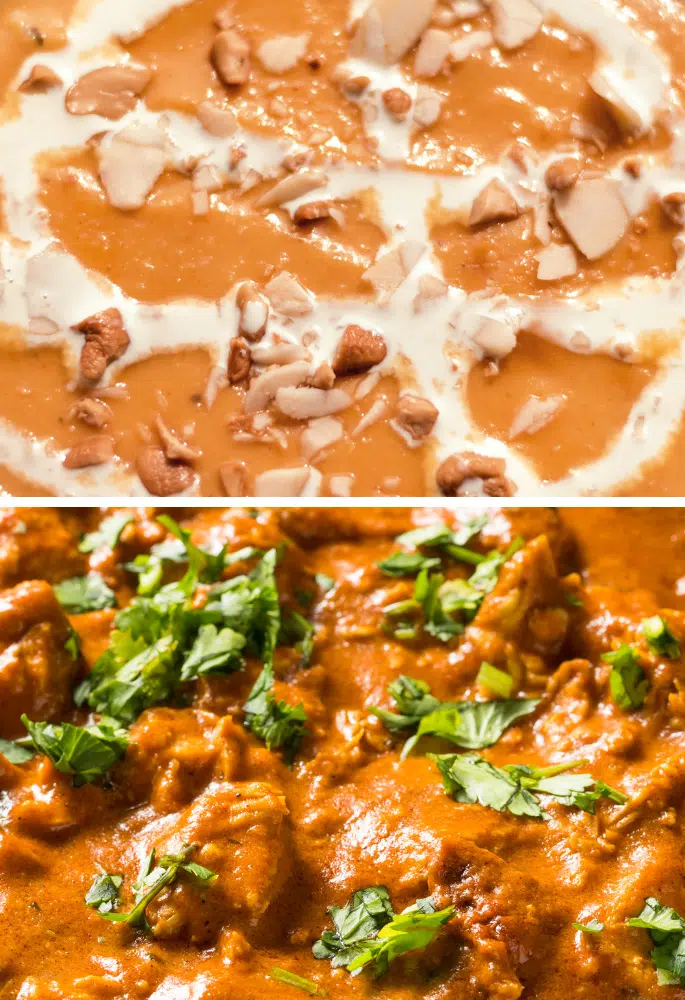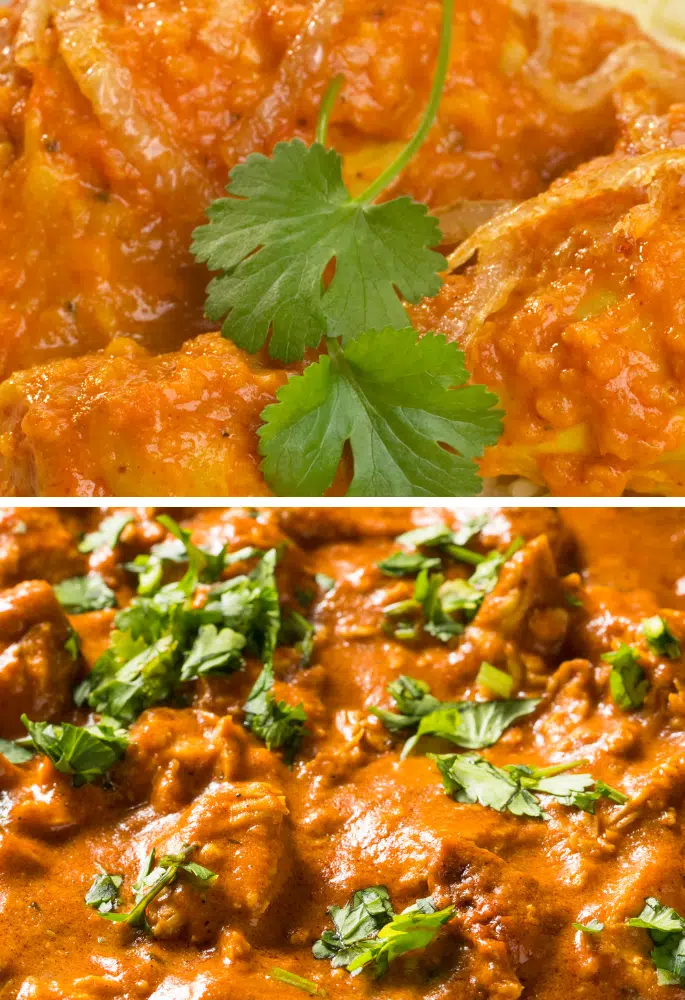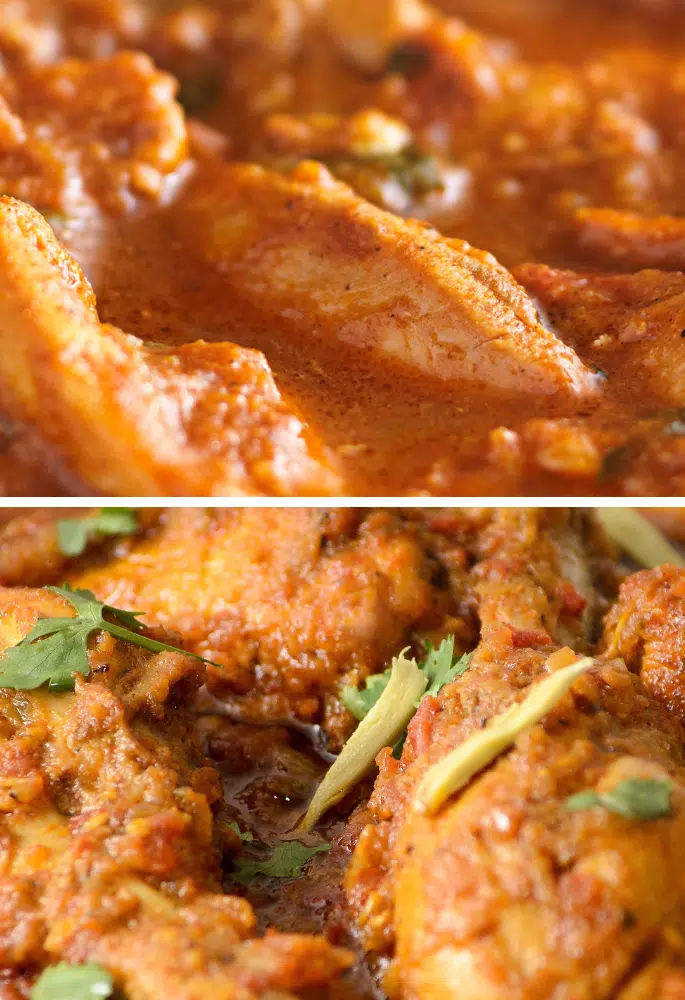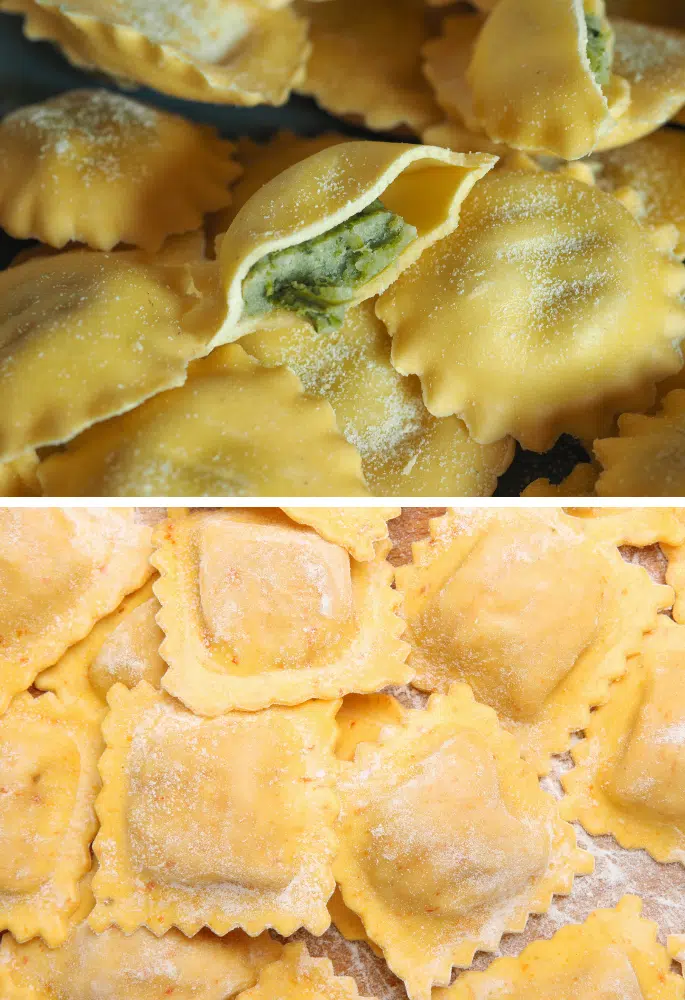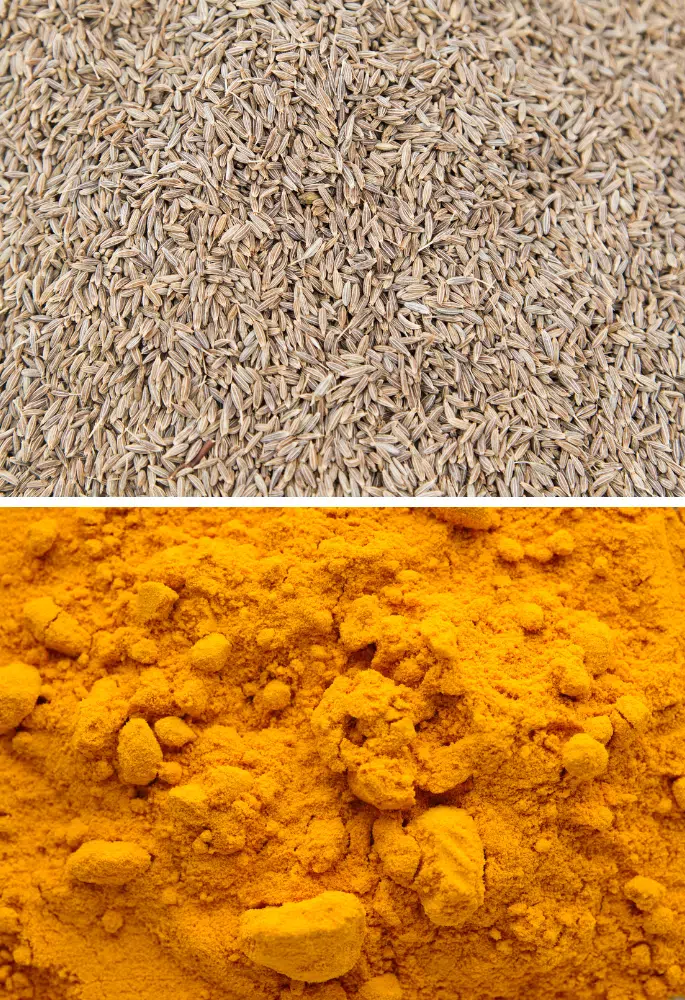Parmesan and Mozzarella are two of the most popular cheeses used in Italian cuisine. Each has unique cooking characteristics and uses, making them staples in kitchens worldwide. So what sets these cheeses apart, what do they have in common and… which is the best (if there is such a thing)?
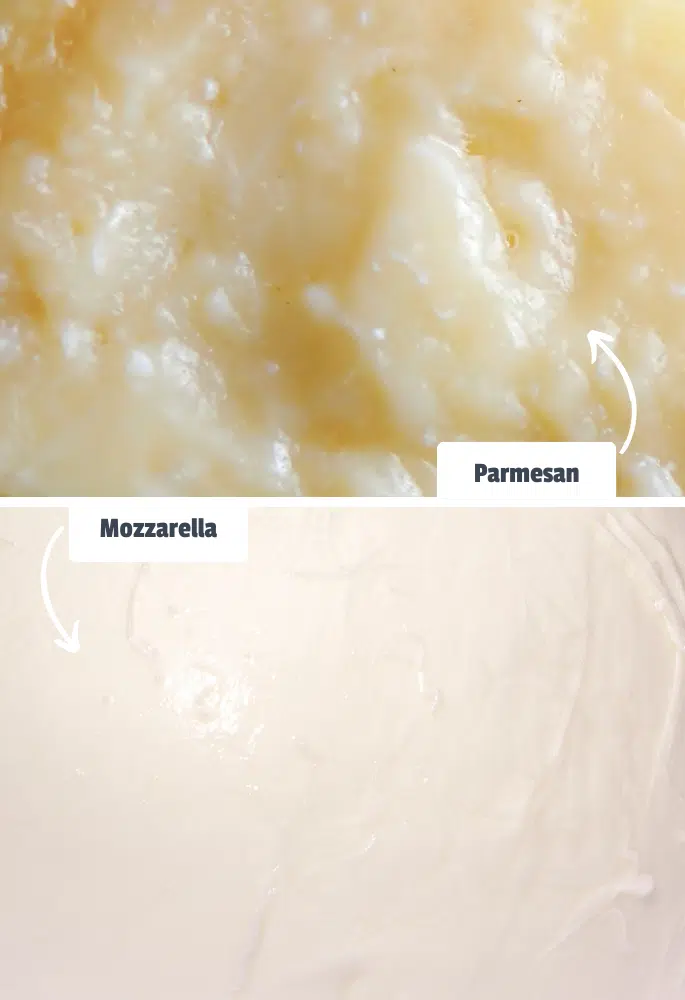
Parmesan is known for its hard texture and intense flavour, ideal for grating over dishes, while Mozzarella is soft and mild, perfect for melting. They differ significantly in ageing process, texture, and flavour, but share similarities in their Italian origins and wide use in cooking.
What is Parmesan?
Parmesan, or Parmigiano-Reggiano, is a hard, granular cheese from Italy. It’s made from cow’s milk and aged.
Parmesan has a deep, nutty, and savoury flavour. It’s typically used grated over pasta, soups, and risotto or as a table cheese. Its unique ageing process gives it a crystalline texture and robust taste.
Parmesan cheese, specifically Parmigiano-Reggiano, is typically aged for a minimum of 12 months. However, for more depth of flavour, it can be aged for 24 months or longer, with some varieties even reaching up to 36 months of aging.
What is Mozzarella?
Mozzarella is a soft, white cheese originally from Italy. Traditionally made from the milk of water buffaloes, it is now commonly produced with cow’s milk.
Mozzarella is famous for its mild flavour and stringy, elastic texture when melted.
It’s a key ingredient in pizza, caprese salad, and lasagne. Fresh Mozzarella is often enjoyed on its own or with a drizzle of olive oil and herbs. Especially when you start looking at more artisinal forms of Mozzarella such as Burrata.
Similarities Between Parmesan and Mozzarella
If you know anything about cheese, it’s fairly obvious that Parmesan and Mozzarella are completely different. Having said that, they do share some similarities.
- Italian Origin: Both cheeses originate from Italy and are integral to Italian cuisine. They tend to be fairly widely used now (but they’re not actually from the same region, but more on that shortly).
- Versatility in Cooking: They are both highly versatile in cooking, used in various dishes from pasta to salads. Shaved Parmesan is added to rocket salads, sliced Mozzarella is used in a caprese, and both are used melted in pasta al forno.
- Global Popularity: Parmesan and Mozzarella are popular worldwide and are commonly found in many international dishes beyond Italian cuisine. You don’t exactly need to go to a fancy Italian shop to buy it.
Differences Between Parmesan and Mozzarella
Of course, there’s no hiding the fact that these are difference cheeses. The list of differences between the two is pretty extensive.
- Texture: Parmesan is hard and crumbly, ideal for grating, whereas Mozzarella is soft and stretchy, perfect for melting. You can tear a Mozzarella ball but good luck trying to do the same with Parmesan!
- Regionality: Mozzarella originates from the Campania region in Southern Italy, mainly known for its buffalo mozzarella from the marshlands of Campania and Lazio. Parmesan hails from the Northern regions of Italy, specifically Emilia-Romagna and Lombardy,
- Flavour: Parmesan has a rich, nutty, and slightly salty flavour that can be quite overpowering if used excessively, while Mozzarella is mild and creamy.
- Ageing Process: Parmesan is aged for a long time (12-36 months), contributing to its complex flavour, while Mozzarella is enjoyed fresh or aged briefly.
- Origin of Milk: Traditional Mozzarella is made from water buffalo milk, whereas Parmesan is produced using cow’s milk. Although most store-bought Mozzarella is now made with cow’s milk as it’s much cheaper.
- Culinary Uses: Parmesan is commonly grated over dishes as a finisher, while Mozzarella is used for its melting qualities in various baked dishes.
Yes, you can substitute Parmesan for Mozzarella but expect changes in flavour and texture. Parmesan is harder and has a stronger, saltier taste, while Mozzarella is softer and milder. This swap works better in dishes where cheese is a secondary ingredient rather than the main feature.
Parmesan vs Mozzarella: Which Wins?
You’re being put on the spot now! If you had to pick one or the other, which would get your vote? Do you prefer the intense flavour of Parmesan or the creaminess of Mozzarella? It’s time to cast your vote:
Do You Prefer Parmesan or Mozzarella?
Hailing from Liverpool, Oliver is an adventurous chef with a penchant for exploring diverse cuisines and novel ingredients. Ollie, combining his love for local British flavours with global influences, brings innovation and charm to home cooking.


